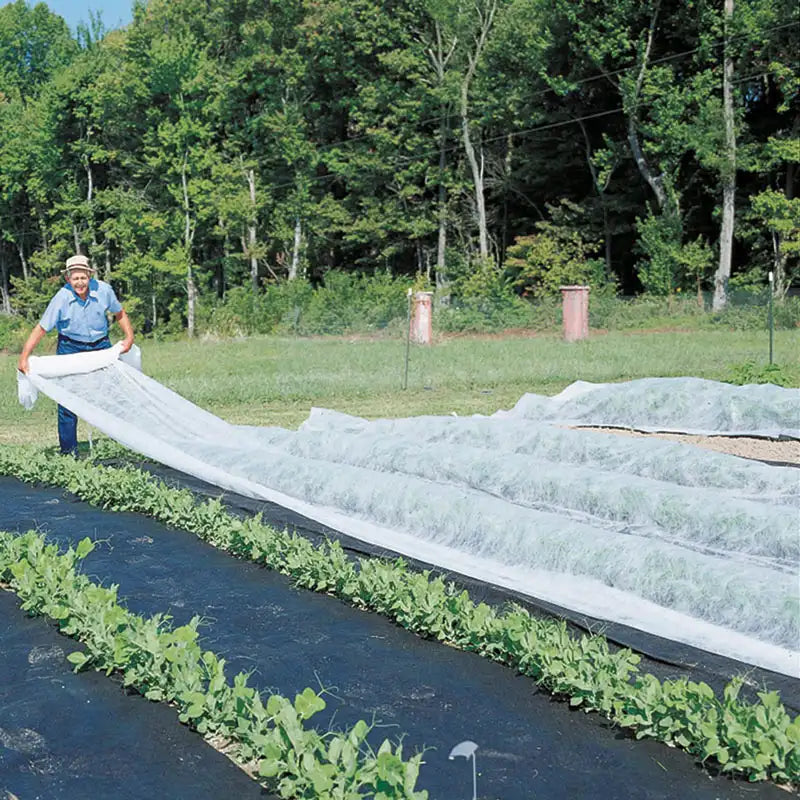It's Time for the THIRD Season of Gardening
It's Time for the THIRD Season of Gardening
...and season number three (namely the Fall) may be the easiest of them all. You don't have the cool wet soil of Spring to deal with, nor the sometimes-ungodly heat of Summer. Grow the correct plants and fall gardening will deceive you into thinking you're actually good at this!
-
Garlic. Yes, we've been talking about it all year, but now we can finally do something about it! Obtain planting garlic from a neighbor, reputable online source or a local farmer's market that's 'producer only', meaning the people selling also did the growing. Do NOT use supermarket garlic; it has probably been treated with sprouting inhibitors, is probably the wrong planting type for your region, and the odds are good it was grown in China to flood the American market.
- Carefully break the heads into their individual cloves and plant each clove about six inches deep and six inches to a foot apart in your loosest, richest soil. Don't plant in heavy clay or in areas of poor drainage. If all goes well (and it should) you'll harvest a full-sized head from each planted clove next June/early July. (See THIS PREVIOUS YBYG Q of the Week on garlic growing for the rest of the details.)
- Pansies. Years ago, you could only buy flats of these cool-weather lovers in the Spring, but then we began to see 'special' pansies appear in garden centers in the Fall with names like "Icicle Pansies" and "Winter Pansies". They're the same damn pansies they sell in the Spring! But if you plant them now, they'll pump out blooms until heavy snow or ice slows them down. Then they'll bloom again when the weather is halfway decent, bloom like crazy in the Spring and keep pumping out those edible flowers until Summer heat shuts them down.
- Yes, pansy flowers (not the leaves) are edible, nutritious (they're the only food source of Rutin, a nutrient that prevents or reverses the visible effects of spider and varicose veins), and they're delicious. Unless you're certain the plants were organically grown, pull off the first couple of runs before you begin to use the flowers to adorn your salads. Five pansy flowers provide your daily dose of Rutin.
-
Salad greens. The soil is still nice and warm, so the seeds of lettuce, spinach, kale and other greens will sprout rapidly at this time of year. I grow all my lettuce and such in big containers on my patio: half-whiskey barrels, grow bags, my brand-new raised bed on legs, and smaller containers placed on tables. Prevents rabbit damage and makes harvesting super-easy. The higher up your greens, the more you'll enjoy the growing.
- This is the best time to grow "Cut and come again" style greens. Instead of spacing out your seeds as you would to harvest whole heads, sow them thickly; almost as if you were seeding a lawn. When the greens reach three to four inches high, snip off a row with a pair of scissors, leaving the roots and about an inch of greenery in the ground. Continue giving your patch a haircut until you've done a complete snipping. By then, that first row should have regrown enough for another harvest. Lather, rinse, repeat. Plant a big enough area and you can enjoy tasty 'baby greens' every day. And, if you have a mild winter, the roots will survive and grow a couple more harvests for you in the Spring.
- Bonus: Greens harvested in cool weather will always taste better than greens sown in the Spring. The cool nights of fall greatly concentrate their sugars and nutrients.
- Double bonus. Use a season-extending device like row covers or grow tunnels (row covers with built in hoops) and your plants will enjoy temperatures four to eight degrees warmer than the outside air. (Four degrees for lightweight covers; eight for heavyweight fabrics.)
- New trees and shrubs. Newly purchased trees and shrubs have a much better rate of survival when installed in the Fall as opposed to the Spring. When you plant in the Spring, the plants often don't have enough time to acclimate before the heat of summer hits. Plants installed in the Fall are already going dormant and have plenty of time to acclimate to their site before the growing season begins again. AND nurseries normally heavily discount plants in the Fall so that they don't have to care for them over winter.
- Do NOT listen to so-called 'professionals' who tell you to leave the burlap on the rootball, fill the hole with nice soft amendments like peat moss and perlite and then mound chipped-up pallets that have been painted the color of a Burger King around the trunks.
- Instead, remove and discard ALL wrappings of any kind. Dig a wide hole, not a deep one. Position trees so that their root flare is visible above ground. Shrubs should be planted slightly higher than they were in their pots. If the plant is grafted, always make sure the graft is visible above ground. Refill the hole with the same soil you removed. And if you MUST apply mulch, start six inches away from the plant and extend the mulch line out as far as you estimate the longest branch will extend. Never apply mulch deeper than two inches and NEVER touch any kind of plant with any kind of mulch!
- Fall pruning. DON'T! Nothing needs to be pruned in the Fall, nothing should be pruned in the Fall, and pruning in the Fall carries a high risk of plant damage and/or death from winter injury. Prune Spring bloomers after they finish blooming in the Spring. Prune roses and Summer bloomers a couple of weeks after they begin growing again in the Spring.



